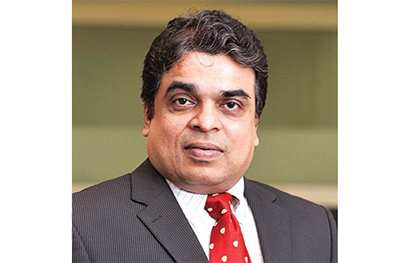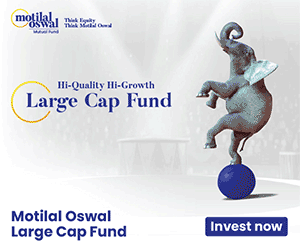Investing in India: Silver Lining For Investors
BFSI Industry Interview

Mr. Dhimant Shah is a Chartered Accountant & Commerce Graduate. He carries an extensive experience of 26 years with top tier track record with Marquee Indian Mutual Funds.
In his last stint, Shah was heading Research and was co-fund manager - Equities with Oneup Finance Pvt. Ltd. Previously, he was associated with ASK Raymond James, Reliance AMC (PMS), HSBC Asset Management (India) Pvt. Ltd., Principal PNB AMC (India) Pvt. Ltd. His stints also included IL&FS AMC Ltd, J V Gokal Investments (Pvt.) According to ET Wealth and Morning Star, Ltd. Shah was amongst the top 5 fund managers in Multi Cap Category for the year 2019.
In his conversation with AdvisorKhoj, he discusses the underlying reason for recent outperformance and his view on the strength of the Indian economy.
Your funds have recently bounced back to quartile 1 - ITI Long Term Equity Fund, ITI Multi Cap Fund, ITI Small Cap Fund and ITI Value Fund. What has worked for you in this turnaround?
The changes that have helped with this Turnaround are mainly due to -
- Seasoned Investment team with a total experience of 100+ years in Financial Markets comprising of Senior Fund Manager Mr. Dhimant Shah (26 years of Experience) and Fund managers: Mr Rohan Korde(19 years of Work Exp), Mr Vishal Jajoo (15 years of Work Exp) & Mr Nilay Dalal (12 years of Work Exp) supported with Robust Research Team and Mr Vikrant Mehta (28 years of Work Exp) handling our Fixed Income schemes.
- Emphasis is on Stock Picking & bottom-up stock selection to find compounding ideas
- Conscious efforts are made to ensure that sectoral weight divergence is in an acceptable range (actively tracked by the risk team as well)
- Low emphasis on taking cash calls and remaining fully invested.
You have worked in the industry for over two decades. How is this time different in the markets? Could you provide some light on the Key Pillars of strength for the Economy?
The Nifty was the fourth best-performing market in the world during the April-June quarter, notably outperforming the EM (Emerging Markets) benchmark. While due to the rally in equity markets over the last 3 months, the valuations of Indian equity markets have gone up, but it is worthwhile to note that India is still expected to be the highest earnings growth market.
Key pillars of the strength of the economy:
- Strong Manufacturing PMI (full form of PMI to be mentioned) Manufacturing PMI has remained above 55.0 level since July 2022, something that has not happened for a sustained period since the start of the index in 2013; with new order growth at a 3-month peak.
- Buoyant capex outlook: Private capex announcements grew 75% yoy to Rs. 26 lakh crore (9.6% of GDP) in FY23 vs. Rs. 15 lakh crore (6.4% % of GDP) in FY22. Notably, capex announcements by large corporates (>Rs. 3000 crore) are mostly from Green Hydrogen, Data Centers, Semiconductor, Renewables and Steel sectors. State governments' capex has also picked up in the first four months of CY23. The private sector is not holding back either, with corporate capex announcements reaching an all-time high in FY23. One area that has experienced remarkable acceleration is Data Centers, as Rs. 1.4 lakh crore worth of capex has been announced for data centre construction in the last two years. The Production Linked Scheme (PLI) has proven to be a game-changer for electronic goods exports (reached an all-time high)
- Services PMI holds the fort: Service PMI is reflecting even stronger trends; prospects of uptick in new activity are healthy in hospitals, airports, telecom and office space. Government spending remains strong, reflective in healthy >20% growth in construction equipment sales in FY2023 and expectation of mid-to-high teens growth for FY2024 (as per Indian Construction Equipment Manufacturers Association).
- “Power packed” New Electricity Policy: Historically, power demand in the economy has grown at a pace lower than the GDP growth. However, over the last couple of years, the power demand in the economy has grown at a multiplier of the GDP growth. The peak power demand for the month of June touched a high of 223 GW compared to 212 GW during June 2022. Considering the sharp surge in demand, the New Electricity Policy has laid a high focus on coal as well as renewable power generation.
- Real Estate “upcycle” continues: As per the historical trends, the Indian Real Estate Cycle tends to move in “upcycles and downcycles” lasting over a period of 8 years each. Post-2020: Cycle has begun, and we are just in the 3rd year of upcycle.
- Buoyant advance tax collection figures: Tax buoyancy continues with the government’s advance tax collections for FY24 rising 15% in June quarter from a year earlier to Rs.1.15 lakh crore. The strong growth registered in advance tax collections reflects the corresponding high-frequency data such as Goods and Service Tax (GST) collections, automobile sales and fuel consumption among others.
- Tractor sales tend to make new highs in the year of Lok Sabha Elections: Tractor unit sales over the last two Lok Sabha Elections (held in 2014 & 2019) point towards an interesting trend. They tend to make a “new high” in the year of Lok Sabha Elections. Considering the impending elections in 2024, we can expect a similar trend in this financial year as well. While the urban consumption trends are expected to be stable, there are signs that the rural economy has bottomed out in the last quarter of FY23 after being negative for six consecutive quarters. Demand recovery is expected to sustain in this financial year with continuing moderation in inflation, healthy hike in minimum support prices for key crops and stable non-agricultural income indicators.
- FMCG Sector: Revenues of the fast-moving consumer goods (FMCG) sector are expected to grow in mid-single digits during the present financial year. It is worthwhile to note that the growth would be largely volume driven, unlike price driven, a case in the past two years. Efficient companies would be able to derive significant benefits out of falling raw material prices, thereby improving upon their gross margins. A portion of the gains is expected to get ploughed back in advertising & promotional spends to ensure future revenue/market share.
CY23 view remains intact
For CY23, we maintain our view that India's long-term growth story remains intact. India's economy should continue to exhibit strength relative to other emerging markets, based on many macro indicators including strong Govt revenue collections, low corporate and bank leverage, and stable external position. This should somewhat insulate India from a global economic slowdown.
How do you see all these FII investments in India translating into stock market gains?
All indicators seem to be pointing towards a sustained rise in stock market. A positive inflation outlook (subject to good monsoons) remains crucial to Indian markets. The RBI's (long) pause has boosted market sentiment turning investors towards equity markets, away from bond markets. This has been instrumental in foreign investors returning to India since March 2023.
Another reason for a robust and renewed FII interest has surely been a tepid China revival. Reopening of China has not quite paid off as initially expected and FIIs see India in a more positive light on a comparative basis at this stage.
For FIIs, attractiveness of India as an investment opportunity is rooted in the country's robust growth potential underpinned by resilient financial results (at a broad-based level) and continued political stability. While the current rally shows little signs of slowing down, retail investors can continue investing in well-managed funds via Systematic Investment Plans (SIPs).
Can you share about your portfolio construction & research methodology?
Sure, so we have an active coverage list along with the soft coverage list.
Active Coverage: The ITI MF team has active research of over 256 stocks across market capitalization (large cap, mid cap, and small cap). This is supplemented with a soft coverage of around 228 stocks. Together, this forms the total opportunity canvas for the investment team. The entire coverage list is split sector-wise between the entire investment team. Inclusions (e.g., IPOs) or exclusions are part of the process for both the active and soft coverage list.
Companies which are identified as actively suitable for investment inclusion are part of the Active coverage list. These Companies are closely monitored by the team and by design post each earnings release of such companies, conference calls are attended, and a quarterly note is written. Any meetings, which are regularly held by our teams with these Companies, are also documented. As a practice, any inclusion in the portfolio starts with an Initiating coverage note which is very detailed, supplemented with an earnings model.
Soft Coverage comprises Companies which are important players in the industry, which have the potential to be an investment opportunity or were earlier held in the portfolio. Any meetings with the management of the Company are updated to the team. Broadly, the team is aware of the Company’s developments, fair valuations and investment case for the medium term for these Companies.
A detailed investment meeting and presentations are conducted every week to discuss opportunities for sector updates, new investment ideas, IPO listings etc., and subsequently, the portfolio changes are agreed upon.
At this point, which sectors do you think are showing a high number of opportunities?
Domestic cyclical such as auto and auto ancillaries, consumer durables, real estate and building materials, capital goods, engineering, and infrastructure-related sectors should do well. Within defensives, the pharma and healthcare sector should do better as it comes out of a low growth phase. While the IT sector is facing a threat of global recession, post the correction in the sector in the past 6 months, valuations are more reasonable now, leading us to have a neutral stance on it. We are also maintaining a neutral position in the financials space.
Mutual Fund Investments are subject to market risk, read all scheme related documents carefully
Recent Interviews
-
In conversation with Mr Vaibhav Shah Head Products: Business Strategy & International Business Mirae Asset Mutual Fund India
Apr 18, 2025
-
In conversation with Mr Kaustubh Sule Senior Fund Manager Fixed Income with Groww Mutual Fund
Apr 18, 2025
-
In conversation with Mr Abhishek Tiwari Chief Business Officer of PGIM India Mutual Fund
Apr 5, 2025
-
In Conversation with Mr Akhil Chaturvedi Executive Director & Chief Business Officer with Motilal Oswal Mutual Fund
Mar 26, 2025
-
In conversation with Mr Rohit Seksaria Fund Manager Equity with Sundaram Mutual Fund
Mar 7, 2025
Fund News
-
Axis Mutual Fund joins ONDC Network to Expand Access to Mutual Fund Investments
Apr 18, 2025 by Axis Mutual Fund
-
Nippon India Mutual Fund launches Nippon India Nifty 500 Quality 50 Index Fund
Apr 18, 2025 by Advisorkhoj Team
-
Nippon India Mutual Fund launches Nippon India Nifty 500 Low Volatility 50 Index Fund
Apr 18, 2025 by Advisorkhoj Team
-
RBI Monetary Policy: RBI changes policy stance and lowers rate
Apr 9, 2025 by Axis Mutual Fund
-
Kotak Mahindra Mutual Fund launches Kotak Nifty Top 10 Equal Weight Index Fund
Apr 7, 2025 by Advisorkhoj Team




